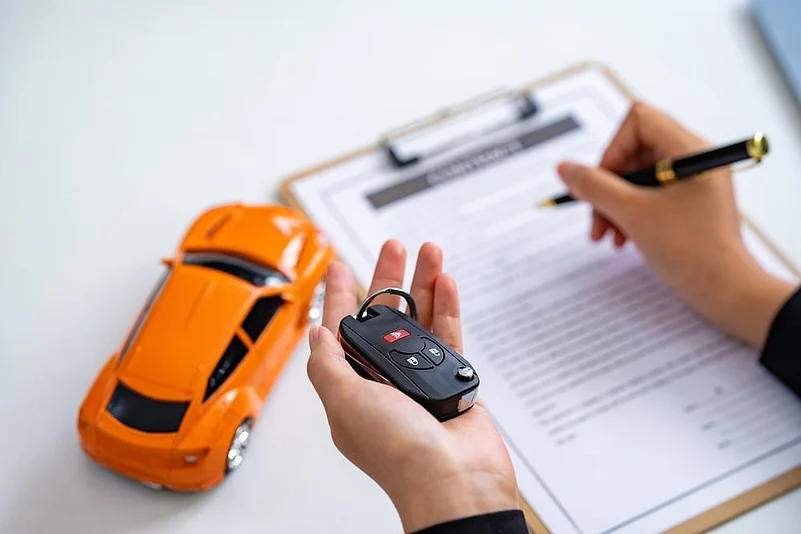Traditionally, motor insurance for new cars included a one-year Own Damage (OD) cover and a three-year Third Party (TP) cover, leaving car owners to renew the OD cover yearly. But now, new three-year OD + three-year TP plans provide both Own Damage and third-party protection for a full three years, offering long-term savings, greater convenience, and a 10 per cent discount on premiums for opting into this coverage. According to experts, this shift brings benefits, especially for owners of electric and hybrid vehicles, who face distinct insurance needs.
How The New 3+3 Year Plan Works
“The new 3+3 plan offers a streamlined approach by bundling OD and TP coverage into a single policy. This eliminates the need for annual OD renewals, saving policyholders time and hassle. Additionally, the plan's extended coverage provides peace of mind, as drivers can enjoy continuous protection without worrying about lapses. The immediate 10 per cent discount on premiums makes this option more convenient, reducing the financial burden over the policy's lifespan,” says Paras Pasricha, head, motor insurance, Policybazaar.
The 3+3 plan offers advantages for electric vehicle (EV) and hybrid car owners.
Coverage for Battery
Electric Vehicles (EVs)
In EVs, the battery constitutes 40-60 per cent of the vehicle's cost, making it a priority for comprehensive insurance. Modern EV insurance policies with the 3+3 plan extend critical protection against battery-related risks, including:
Battery Degradation: Coverage for gradual wear, helping offset potential loss in battery performance.
Charging Mishaps: Protection against incidents like power surges while charging.
Battery Replacement: Covers the cost of replacing batteries damaged by water or severe environmental exposure, such as flooding.
Since battery replacement in EVs is notably costly, the 3+3 policy brings greater peace of mind, ensuring that such an essential component remains protected long-term without yearly renewal concerns.
Hybrid Cars
Hybrid Vehicles, which feature both a battery and an internal combustion engine (ICE), have different insurance needs. Insurance policies for hybrids generally provide:
Balanced Battery and Engine Coverage: While hybrids have a battery, they complement rather than power the vehicle fully. Thus, the insurance policy tends to prioritize engine-related risks.
Focused Battery Insurance: Since the hybrid battery is less central than in an EV, coverage for it is not as extensive as for EVs.
Hybrid owners benefit from the extended protection of the 3+3 plan as it covers both engine and battery repairs, while insurance policies factor in the unique makeup of a hybrid vehicle.
Coverage for Charging Equipment
Electric Vehicles (EVs)
Charging equipment, such as home charging stations, is essential for EV owners. Many insurers now offer add-ons to cover potential damage to charging equipment, especially:
Environmental Damage: Protection against damage from extreme weather conditions, such as rain or storms.
Theft Coverage: Some policies even extend coverage against theft of portable charging equipment.
The 3+3 plan offers an advantage here by allowing customers to secure charging equipment protection without frequent renewals, which is particularly helpful during seasons when weather-related damage risks increase.
Hybrid Cars
Hybrid vehicles, unlike EVs, do not require external charging. They either recharge through the engine or regenerative braking, so the insurance focus remains on ICE and related components rather than on charging equipment.
Premium Comparison Between EVs and Hybrids
Electric Vehicles (EVs)
Premiums for EV insurance are typically higher than those for traditional vehicles because:
High-Cost Components: The battery and other advanced electrical components raise the base premium.
Specialized Repairs: EVs often require specialized services for repairs, further elevating the premium.
However, with the 3+3 plan’s 10 per cent discount, EV owners can save significantly on their insurance premiums while securing their high-value vehicle for an extended period.
Hybrid Cars
Hybrids, which are less reliant on specialized components than EVs, tend to have lower insurance premiums. Their insurance policies focus primarily on the ICE, resulting in reduced repair costs. With a lower premium base, hybrid owners can enjoy affordable coverage over three years while still benefitting from the 10 per cent discount on the 3+3 plan.
Essential Add-Ons for EV and Hybrid Owners
Zero Depreciation / Bumper-to-Bumper Cover
Both EV and hybrid owners can benefit from zero-depreciation (or bumper-to-bumper) coverage, which ensures full payouts without depreciation deductions, especially valuable given the high cost of EV parts and hybrid engine components.
Engine and Electrical Component Protection
For hybrids, engine protection add-ons are crucial due to reliance on the ICE. EV owners, on the other hand, might find it beneficial to opt for add-ons covering sensitive electrical systems, which can be more prone to water ingress and environmental damage. These add-ons, combined with the 3+3 plan, provide substantial protection without the need for annual renewals.
Key Advantages of the 3+3 Year Plan
10 Per Cent Premium Discount: Save immediately on premiums with this long-term option.
No Renewal Hassles: Enjoy three years free from renewal tasks, saving policyholders time and fewer administrative worries.
Comprehensive, Long-Term Coverage: Extended coverage prevents lapses, offering uninterrupted protection against unforeseen events.















